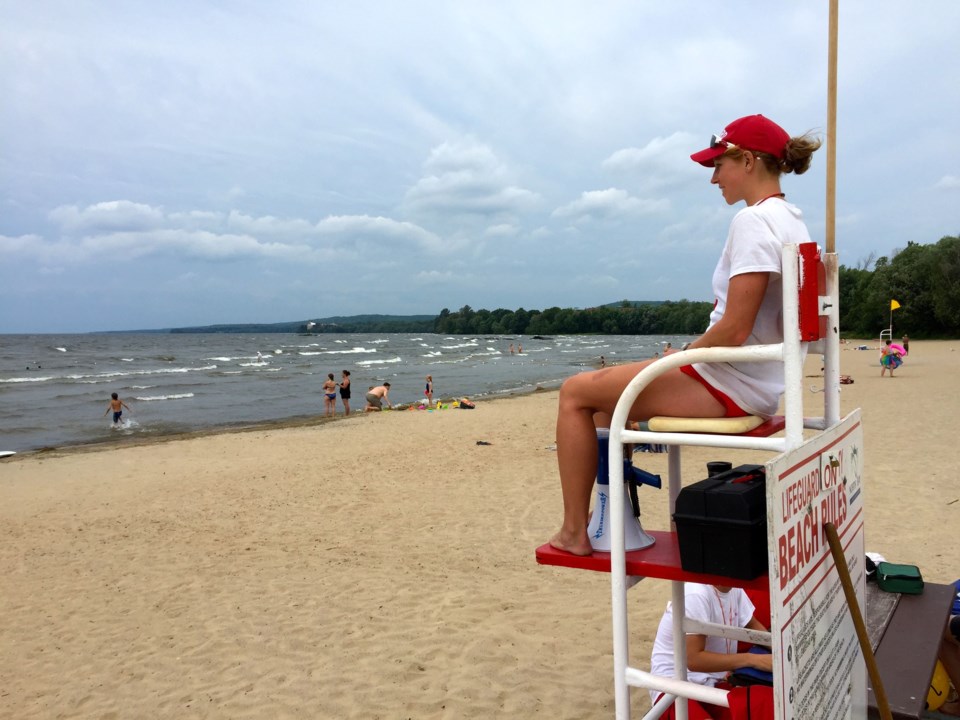It’s a windy day at Marathon Beach on Lake Nipissing.
For Head Lifeguard Jennifer Piper, that means keeping a watchful eye on the beach and the water.
Piper has been a lifeguard for more than a decade, making the transition from lifeguarding at the pool at CFB North Bay to the beautiful beaches of Lake Nipissing and Trout Lake.
“There are obviously some environmental and element challenges that you face being a waterfront life guard that are much different than being in a pool setting but there’s an overlap in the skill set but there’s still that there’s more equipment you have to use and there’s more situations that you have to learn to deal with,” stated Piper.
On this day, a yellow flag flies above her Lifeguard tower. Those flags are an indication to beach goers what the lake conditions are.
“On a day like today where winds cause increased waves we have a flag system that we use here so green is moderate to little wind, and little wave activity,” said Piper who is also a swim coach for the CT-33 Thunderbirds swim team.
“The yellow would indicate that the wind has increased causing more waves and fluctuation of water levels and of course with the wave action it decreases our visibility as lifeguards and as well there’s a red flag that if things progress and do become severely wavy and the water levels change, that’s an indication that our lifeguard team has very poor visibility and the waves will be changing the water level.”
While Piper spends all her time working at Marathon Beach, she says there are big differences at beaches on Lake Nipissing and Trout Lake for both swimmers and lifeguards alike.
“On Trout Lake there are docks and for waterfront lifeguards docks are an additional challenge because swimmers can get themselves on a far side of the dock where your visibility is reduced or very minimal,” she said about the two supervised beaches on Trout Lake.
“For Lake Nipissing I would say the higher winds and the wave activity. So the wave action is something that swimmers always have to be cautious about especially for children that may be weaker in the water or adults that may be weaker swimmers. They don’t necessarily realize how much the water level will change when the waves start to pick up,” added Piper about Marathon Beach which is the only supervised beach on Lake Nipissing.
Piper says as lifeguards, teamwork and communication are key.
“Being a good beach lifeguard is you have to take pride in the fact that you are in the public, you are in an uncontrolled setting so you always need to be an advocate for everyone on the beach and in the sense of keeping the public safe in the water and out of the water. You have to be able to be approachable, you have to be a team player, you have to use your communication, you have a large area to deal with and you have to always be diligent in watching your area, checking the water and making sure your swimmers are accounted for,” she said.
Piper encourages beachgoers to be prepared when they come to the beach and she suggests everyone take the free Swim to Survive courses that are being offered at different dates and locations this summer.



